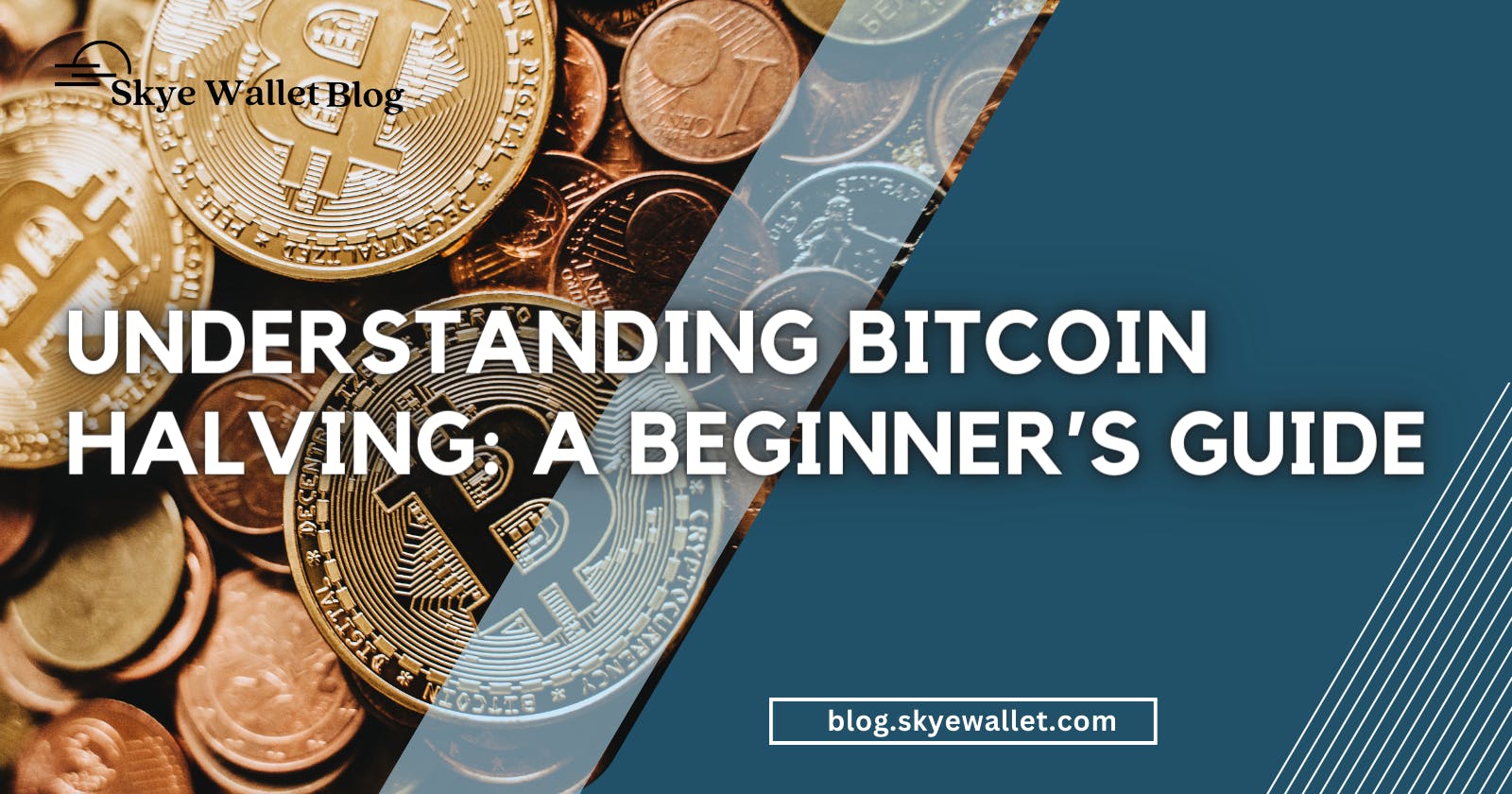Bitcoin, the pioneering cryptocurrency, operates on a unique system that sets it apart from traditional currencies: the process of "halving." This fundamental mechanism is essential for the Bitcoin network's functionality and economic model.
Bitcoin halving is a fundamental event in the world of cryptocurrencies, particularly for those who are interested in Bitcoin. It's a process that happens approximately every four years and has a significant impact on Bitcoin's supply, mining, and overall ecosystem.
In this article, we'll delve into what Bitcoin halving is, why it's significant, and what implications it holds for investors and the cryptocurrency ecosystem.
What is Bitcoin Halving?
Bitcoin halving is a built-in event in the Bitcoin protocol that reduces the rewards that miners receive for verifying transactions on the Bitcoin network. Specifically, the reward for mining a block (a bundle of verified transactions) is cut in half, meaning miners receive 50% fewer bitcoins for verifying transactions. This process occurs approximately every four years or after every 210,000 blocks mined.
The first halving took place in November 2012, reducing the reward from 50 BTC per block to 25 BTC. The second halving occurred in July 2016, bringing the reward down to 12.5 BTC. The third halving happened in May 2020, reducing the reward to 6.25 BTC. The next halving is expected to occur in April 2024, when the block reward will fall to 3.125 BTC.
As of March 2024, about 19.65 million bitcoins were in circulation, leaving just around 1.35 million to be released via mining rewards.
What is halved?
It is not the Bitcoin price that is halved, as some media write. Nor is the total amount of Bitcoins halved. Instead, the number of newly created Bitcoins per block is halved, which means a slowdown in the growth of the Bitcoin supply. This is ultimately essential for the scarcity of Bitcoin.
Purpose of Bitcoin Halving
The primary purpose of Bitcoin halving is to control the supply of new bitcoins and ensure that the total supply remains limited. Bitcoin was designed by its creator, Satoshi Nakamoto, to have a maximum supply of 21 million bitcoins. By halving the reward periodically, the protocol ensures that the issuance of new bitcoins slows down over time and eventually stops when the maximum supply is reached.
Halving also plays a role in the deflationary nature of Bitcoin. As the supply becomes more limited, the value of each existing bitcoin may increase, assuming demand remains stable or increases. This scarcity is a key factor in Bitcoin's appeal as a store of value, similar to precious metals like gold.
Impact of Halving on Miners
Bitcoin halving has a direct impact on miners, who are responsible for verifying transactions and adding them to the blockchain. Since the reward for mining a block is cut in half, miners receive less compensation for their efforts. This can make mining less profitable, especially for smaller mining operations or those with high operational costs.
However, miners also benefit from potential increases in the price of Bitcoin following a halving event. If the price of Bitcoin rises, it can offset the reduced rewards and make mining more profitable. In some cases, miners may need to upgrade their equipment to more efficient models or join mining pools to maintain profitability.
Impact of Halving on Crypto Market
Bitcoin halving events are closely watched by the crypto community and can have a significant impact on the market. Typically, halvings lead to increased interest in Bitcoin and may drive up the price due to the reduction in new supply. This can create a cycle of increased demand and speculation, which in turn can further drive up prices.
However, the market response to halving events is not always predictable. While past halvings have been followed by bull markets, there are many factors at play, including macroeconomic conditions and regulatory developments, that can influence Bitcoin's price and overall market trends.
Effect of Halving on Consumers
Consumers and retail Bitcoin users might be affected by a halving in the value of the Bitcoin they hold. Those who buy Bitcoin for making purchases will generally only be affected by price fluctuations, which may or may not remain similar to those before the halving occurred.
For those using Bitcoin for remittances, a halving means the same thing as it does for shoppers. The value of their remittances will depend on Bitcoin's market price after the halving event.
Bitcoin and Skye Wallet
Skye Wallet enables individuals throughout Nigeria to instantly buy and sell Bitcoin through the use of Instant Bank Transfer, Voucher and automated P2P system. Skye Wallet is available on Web, Android, and iPhone. Download App Now or Visit the Website.
You can further read on how to buy and sell Bitcoin in Nigeria:
What Happens When There Are No More Bitcoins Left?
It is often thought that in 2140, the last bitcoin will be mined. However, if the reward is halved every 210,000 blocks, it will get smaller and smaller until one satoshi is the reward and the total amount circulating equals 21 million. One satoshi is 0.00000001 bitcoin—it is the lowest denomination of Bitcoin and cannot be halved. After all 21 million Bitcoins are mined, miners will no longer receive block rewards and will rely on transaction fees for compensation.
Conclusion
Bitcoin halving is a critical event that shapes the supply and demand dynamics of the cryptocurrency. It has a direct impact on miners' profitability and can influence Bitcoin's market value. While past halvings have led to increased prices and market interest, there are no guarantees for future events.
By understanding the implications of Bitcoin halving and taking a thoughtful approach to investing, individuals can navigate the cryptocurrency market more effectively. As with any investment, it is essential to conduct thorough research and consider personal risk tolerance before making decisions.



